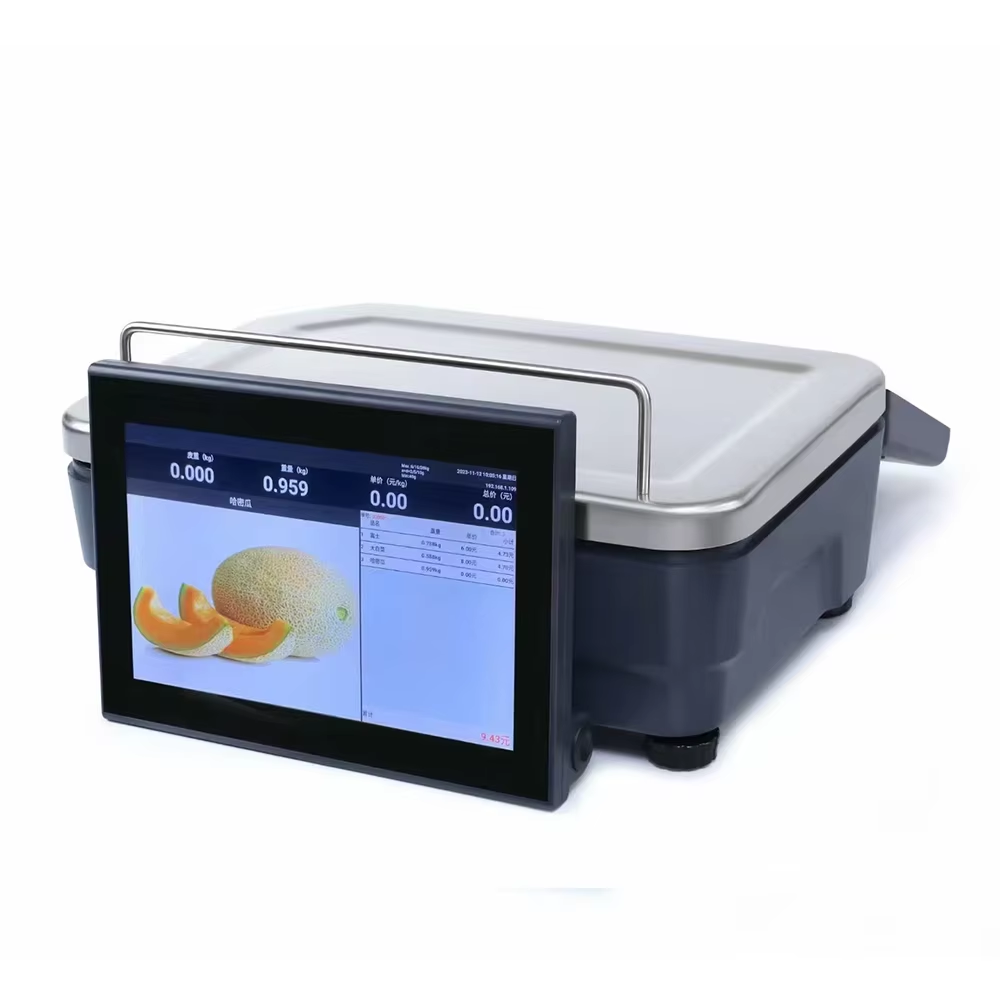בסביבה הקמעונאית המהירה של ימינו, תווית מדפים שימשו ככוח העבודה השקט מאחורי ניהול מלאי מוצלח. כלים קטנים אך עוצמתיים אלו עושים הרבה יותר מאשר הצגת מחירים - הם מהווים את הבסיס לדיוק במלאי, שביעות רצון הלקוחות וכفاءה תפעולית. ככל שהקמעונאות ממשיכה להתפתח עם ההמרה הדיגיטלית, השימוש האסטרטגי בתוויות מדף הפך ליותר מתוחכם, ומציע פתרונות לאתגרים עתיקים תוך שילוב דרך למיזמים עתידיים.
המסע של תיוגי מדפים, מתיוגי מחיר נייר פשוטים ועד למערכות אלקטרוניות מתקדמות, משקף את הטרנספורמציה הדיגיטלית הרחבה בתעשיית הקמעונאות. תיוגי מדפים מבוססי נייר, למרות שהן מוכרות, דרשו עדכונים ידניים מתמידים והיו נתונות לשגיאות אנוש. תיוגי מדפים אלקטרוניים (ESLs) ופתרונות תיוג חכמים שיננו את הדרך בה מנהלים קמעונאים את המלאי שלהם, ומציעים עדכונים בזמן אמת ושיפור הדיוק.
תוויות מדף דיגיטליות כוללות כעת תכונות כגון מסכי נייר אלקטרוני, קישוריות אלחוטית, ושילוב עם מערכות ניהול מלאי. קפיצה טכנולוגית זו הפחיתה בצורה משמעותית את הזמן והמשאבים הנדרשים לעדכון מחירים, תוך שיפור דיוק רמות המלאי ומידע על המוצרים.
התוויות של היום אינן רכיבים עצמאיים יותר, אלא חלקים אינטגרליים של פתרונות מקיפים لإدارة מלאי. על ידי חיבור תוויות המדף לבסיסי נתונים מרכזיים, קמעונאים יכולים לשמור על תמחור עקבי בין הערוצים, לעקוב אחר רמות המלאי בזמן אמת, ולקבל התראות אוטומטיות כאשר המלאי מגיע לרמות קריטיות. שילוב זה מבטיח שהתוויות הפיזיות על המדף מתאימות באופן מושלם למערכות נקודת מכירה ופלטפורמות מסחר אלקטרוני.
מערכות תוויות מדף מתקדמות יכולות כעת לתקשר עם תוכנות ניהול מחסן, לאפשר תהליכי הזמנה אוטומטיים ולספק תובנות חשובות על דפוסי תנועת מוצרים. אינטגרציה חלקה זו הפכה לנחוצה לקמעונאים שמבקשים לשמור על יתרון תחרותי בשוק רב-ערוצי הולך וגובר.
תיוגי מדפים מודרניים מצוידים במסכי אלקטרוניקה וחיישנים שיכולים לספק משוב מיידי על רמות המלאי. כשמשולבים עם מערכות ניהול מלאי, תיוגים אלו יכולים להציג לא רק מחיר אלא גם כמויות מלאי נוכחיות, ועוזרים לעובדים לזהות במהירות פריטים שצריכים למלא מחדש. היכולת לניטור בזמן אמת משמעותית בהפחתת הסיכון לחוסר במלאי או מלאי יתר.
היכולת לעדכן מיידית מידע על המלאי ברשת חנויות שלמה מבטיחה ששני הלקוחות והעובדים ישיגו מידע מדויק על המלאי. שקיפות זו עוזרת למנוע thấtמת ללקוחות ומאפשרת תהליכי ניהול מלאי יעילים יותר.
תוויות מדף ממלאות תפקיד מרכזי בהבטחת התאמה לתוכנית המדף ומיקום אופטימלי של מוצרים. על ידי שילוב קודים למיקום והנחיות מיקום, תוויות אלו עוזרות לעובדים להבטיח שמוצרים ממוקמים נכון על המדפים, ובכך מגדילות את יעילות תצוגת המכירה ואת הפוטנציאל להכנסות. יישום נכון של תוויות מדף תומך במיקום מדויק של מוצרים, ומקל על לקוחות ועובדים למצוא פריטים.
מערכות תיוג מתקדמות של מדפים יכולות לכלול הדרכות חזותיות והנחיות מיקום ספציפיות, מה שמקטין את הזמן הדרוש לאיתור מחדש של פריטים על המדף ומבטיח הצגת מוצרים עקבית במספר מוקדי חנות. התקניון הזה חשוב לשמירה על דיוק במלאי ושיפור יעילות התפעול.

יישום מערכות תיוג מדפים אפקטיביות משפיע ישירות על עלויות תפעול ויעילות. תגי מדף אלקטרוניים מבטלים את הצורך בשינויי מחיר ידניים, ובכך מקטינים בצורה משמעותית את שעות העבודה. עובדים יכולים להתמקד במשימות ערך גבוה יותר, כגון שירות לקוחות וניהול מלאי, במקום להשקיע זמן בעדכון תגים נייריים.
האוטומציה של עדכוני מחירים באמצעות תגי מדף דיגיטליים גם מפחיתה את הסבירות לטעויות בתמחור, שיכולות להוביל לחוסר שביעות רצון מצד הלקוחות ואובדן הכנסות. דיוק משופר זה מתורגם לפחות בדיקות מחירים ותביעות בנקודת המכירה, ומשפר את תהליך התשלום.
מערכות תיוג מדפים מיושמות היטב תורמות בצורה משמעותית לדיוק במלאי. על ידי סיפוק מידע ברור על המוצר ועל פרטי המיקום, תגים אלו עוזרים לשמור על מדפים מאורגנים ומפחיתים את הסבירות לפריטים שממוקמים לא נכון. ארגון זה חשוב במיוחד במהלך ספירת מלאי ובדיקות מלאי שגרתיות.
מעקב שוטף ועדכון תגי מדפים מבטיחים שהתאמת המלאי הפיזי לרישומי המערכת, מפחיתים הצנחת מלאי ושיפור כללי של בקרת המלאי. היכולת לזהות במהירות סטיות בעזרת תגי מדף מדויקים עוזרת לקמעונאים לשמור על רמות מלאי אופטימליות ולצמצם עלויות אחסון.
העתיד של תיוגי מדפים נמצא באינטגרציה שלהם עם טכנולוגיית האינטרנט של הדברים (IoT). תיוגים חכמים שמוקמו בהם חיישנים יכולים לנטר את טמפרטורת המוצר, רמת הרטיבות ותאריכי התפוגה, ומספקים נתונים חשובים לניהול מלאי וליבקרת איכות. התכונות המתקדמות הללו עוזרות למנוע בזבוז ומבטיחות את איכות המוצר, במיוחד בסניפי מזון ורמאות.
תיוגי מדפים שמאופשרים על ידי IoT יכולים גם לתקשר עם טלפונים חכמים של לקוחות, ומספקים מידע מפורט על המוצר, ביקורות והנחות מותאמות אישית. החיבור הזה יוצר הזדמנויות חדשות להערבת לקוחות, תוך שמירה על רשומות מלאי מדויקות.
כשקמעונאים ממקדים יותר בהיבטים של קיימום, תגי מדף אלקטרוניים מציעים יתרונות סביבתיים בהשוואה לתגי נייר מסורתיים. תצוגות דיגיטליות מבטלות את הצורך בדפוס ובפינוי תכופים של תגי נייר, ומאפשרות הפחתת פסולת והשפעה על הסביבה. תגי מדף מודרניים מעוצבים לחיים ארוכים וליעילות אנרגטית, ותומכים ביוזמות קיימות של קמעונאים.
הפיתוח של טכנולוגיית e-paper שחלקה לאנרגיה ושל חומרים ניתנים להחזרה לשימוש עבור תגי מדף מדגים את מחויבות התעשייה לאחריות סביבתית, תוך שמירה על רמות גבוהות של דיוק במלאי וכמו גם יעילות בתפעול.
תוויות מדף אלקטרוניות משפרות את דיוק המלאי על ידי עדכונים בזמן אמת, מחיקת שגיאות ידניות בשינויי מחירים, והטמעה ישירה במערכות ניהול מלאי. הן מאפשרות תצוגה מיידית של רמות המלאי ויכולים להפעיל אזהרות הזמנה מחדש באופן אוטומטי, ובכך מפחיתים מקרים של היעדר מלאי וכן מצבים של יתר מלאי.
מערכות סימון מדפים מודרניות מציעות יתרונות כלכליים משמעותיים באמצעות חיסכון במשבי עבודה לעדכוני מחירים, הפחתת שגיאות בתמחור, שיפור דיוק המלאי ופיחות בפסולת נייר. אף שההשקעה הראשונית עשויה להיות גדולה, החיסכון התפעולי ארוך הטווח ושיפורי היעילות מספקים בדרך כלל תשואה חזקה על ההשקעה.
תוויות מדפים תומכות במלאי מרובה ערוצים על ידי הבטחת עקביות מחירים בין ערוצים פיזיים ו דיגיטליים, סיפוק נראות מלאי בזמן אמת, והabilitation לאינטגרציה עם פלטפורמות מסחר אלקטרוני. תוויות אלקטרוניות מודרניות יכולות גם להציג קודים QR או תוכן דיגיטלי שמחבר בין חוויית הקנייה בחנות לחוות הקנייה באינטרנט.
 חדשות חמות
חדשות חמות2024-09-14
2024-11-18
2023-11-14
2023-04-12
2019-07-11